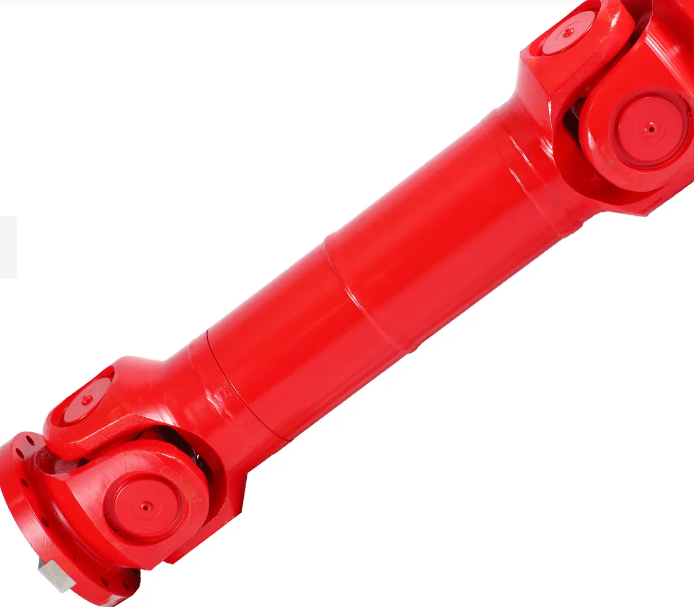Understanding Common Flexible Coupling Problems
Types of Misalignment: Angular vs. Offset
When flexible couplings get out of alignment, it's actually one of those common problems that really messes with how things perform and can eventually break down equipment completely. What happens here is pretty straightforward - the connected shafts just aren't lined up properly, which creates either an angle problem or an offset situation. Angular misalignment means the shaft centerlines cross paths but aren't running straight next to each other, creating this twisting effect between them. Offset misalignment looks different though; the shafts stay parallel but sit off center relative to each other's middle points. According to recent field reports from manufacturing plants across North America, around 35% of all mechanical systems suffer from some form of misalignment issues. This isn't just theoretical either. Real world experience shows these misalignments eat away at components over time. The weird forces generated actually create repeating stress patterns throughout the whole system, wearing down motors first, then bearings, and finally seals. That's why most experienced technicians swear by laser alignment tools nowadays. Getting things perfectly aligned upfront saves money in the long run while keeping operations running smoothly for years instead of months.
Impact of Improper Lubrication on Coupling Lifespan
Getting proper lubrication right makes all the difference for extending coupling lifespan since it cuts down on friction and wear over time. Many people make mistakes though, either putting in the wrong kind of lubricant or not enough of it at all, which really hurts how well these components work. Industry pros stress out that sticking closely to what's recommended when it comes to lubrication definitely helps equipment last longer and run smoother. When done wrong, things get hot real fast and hinges start failing, especially in those flexible couplings that tend to wear out way before they should. Smart maintenance means making sure we're using exactly what the specs call for and applying just the right amount every single time. Regular checks against manufacturer recommendations keep flexible couplings performing properly even under tough conditions. Combine this with other regular maintenance tasks and operators can protect their machines from breakdowns and keep everything running efficiently.
Solutions for Misalignment Issues
Laser Alignment Techniques for Precision
Laser alignment is becoming increasingly popular among industrial maintenance teams looking to get their shafts perfectly aligned. The tech basically uses laser beams to spot those pesky alignment issues between machine parts and fix them with impressive accuracy. According to some research published in manufacturing journals, companies using this method report around 30% less downtime and better overall performance from their equipment. When compared against old school techniques like straight edges or dial indicators, lasers just plain work better most of the time and save hours on setup. But there's a catch worth mentioning here too. Getting good results requires workers who know what they're doing with these systems. Proper training makes all the difference when it comes to making sure those expensive machines stay properly aligned without unnecessary wear and tear.
Regular Maintenance Checks to Prevent Drift
Regular maintenance checks help catch those pesky misalignment problems before they turn into expensive equipment drift down the road. Any good maintenance plan needs to cover basic stuff like looking at components visually, checking if shafts are properly aligned, and taking accurate measurements where needed. Most maintenance professionals will tell anyone who'll listen that doing maintenance ahead of time saves money in the long run. Take vibration analysis for example it's pretty much become standard practice now for spotting alignment issues early on. Manufacturing plants and refineries especially have seen real improvements after implementing proper maintenance routines. Their machines run better overall and breakdowns happen way less frequently than before when folks just waited until something broke to fix it.
Addressing Lubrication and Wear Challenges
Choosing the Right Lubricant for Your Coupling
Choosing the right lubricant for couplings requires looking at multiple important aspects. Viscosity matters a lot, along with how well it works with everything else in the system. The lubricant has to handle whatever environmental challenges come its way temperature swings, moisture levels, whatever's going on around it. Industry experts point out that picking the proper oil or grease makes a real difference in how machines run day to day and how long they last before needing replacement. Testing methods following standards like ASTM aren't just nice to have they're pretty much necessary for verifying if a lubricant actually does what it claims. While setting up these tests might seem expensive upfront, most maintenance teams find that over time they save money because there are fewer breakdowns and less time spent waiting for repairs.
Signs of Premature Wear and How to Intervene
Spotting early signs of wear in couplings matters a lot if we want to catch problems before they get bad. What usually happens? Listen for strange noises, feel around for extra vibrations, and check under the coupling for dust buildup. Most times, misalignment or lack of proper lubrication causes the damage, which means quick fixes are needed right away. We've seen plenty of cases in manufacturing plants where regular inspections saved companies thousands on new equipment costs. That's why checking couplings regularly shouldn't just be optional it needs to become standard practice. When issues pop up, simple actions like getting things aligned properly again, putting fresh grease in there, or making minor adjustments can actually prolong how long those couplings last. For plant managers looking at their bottom line, investing time in these maintenance routines pays off big time by avoiding production stoppages and keeping machines running smoothly day after day.
Avoiding Installation and Selection Mistakes
Following Manufacturer Guidelines for Installation
Following the manufacturer's instructions matters a lot when putting in place those flexible couplings. Getting this right means they'll work properly and last longer than expected. People often mess up installations by skipping alignment checks or just rushing through the steps because time is money. Industry reports actually show that many coupling failures happen simply because someone didn't follow basic installation protocols correctly. Reading through those specs isn't just paperwork; it makes sure everything runs smoothly down the road and keeps systems dependable over years of service. And don't forget to write down what was done during installation. Having good records saves headaches later on when things need fixing or regular maintenance comes around.
How to Select the Correct Coupling Type
Picking the right coupling isn't just about checking off specs - it requires looking at torque requirements, rotational speeds, and what exactly the equipment will be doing day to day. Get this wrong and companies often face higher repair bills and systems that just don't run as smoothly as they should. The Lovejoy Coupling Handbook and similar industry guides offer real world advice for making these decisions, based on decades of field experience rather than theoretical models. Most manufacturing operations maintain detailed technical files and consult with engineers during the selection phase to match couplings with actual workload demands. Real world examples show plants saving thousands annually after switching to better suited couplings, proving that spending time upfront on research pays off handsomely in both performance and wallet savings down the line.
Managing Environmental and Operational Stressors
Mitigating Torsional Vibration Effects
Torsional vibrations typically come from repeating forces inside machines and tend to mess up flexible couplings through misalignment and gradual wear over time. Getting a handle on how these vibrations shorten equipment life makes all the difference when planning regular maintenance work. We've seen plenty of cases where unchecked torsional vibrations cause early breakdowns, so accurate measurement and ongoing monitoring just make sense. A solid approach involves installing torsional dampers or using resilient mounts that soak up those unwanted vibrations before they damage components. Most shops follow standard alignment procedures and install vibration monitoring systems as part of their routine maintenance protocols. These measures really pay off in the long run, not only extending equipment life but also keeping operations running smoothly day after day.
Protecting Couplings from Harsh Environments
Couplings face serious challenges when exposed to harsh environments with extreme heat or cold, high moisture levels, and corrosive chemicals. These tough conditions often cause materials to break down over time and eventually lead to mechanical failures. That's why protection becomes so critical. Industry experience shows that proper enclosures and special coatings work well to keep couplings safe from damage, and companies report fewer breakdowns when they implement these safeguards. Material selection matters too. Some substances naturally stand up better against environmental stress than others. Regular checks should be part of any maintenance schedule to make sure all these protective steps continue working properly. This approach helps extend how long couplings last before needing replacement while keeping operations running smoothly without unexpected downtime.
FAQ
What is angular misalignment in flexible couplings?
Angular misalignment occurs when the shaft centerlines intersect but are not parallel, causing angular displacement between them.
How does improper lubrication affect coupling lifespan?
Improper lubrication can result in increased friction, overheating, and premature wear, leading to reduced coupling lifespan.
Why is laser alignment important for flexible couplings?
Laser alignment provides precise shaft alignment, reducing downtime and improving operational efficiency.
What are signs of premature wear in couplings?
Common signs include unusual noises, vibrations, and the presence of dust beneath the coupling.
How can I select the correct coupling type?
Consider torque, speed, and application specifics, and refer to industry standards and expert recommendations for guidance.
How can flexible couplings be protected from harsh environments?
Using enclosures, specialized coatings, and choosing materials resistant to environmental stressors are effective ways to protect couplings.

